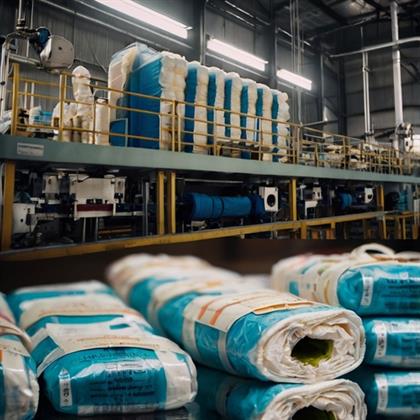
The Carbon Black Market is expected to grow steadily by 2031, spurred by increasing demand from industries like rubber, plastics, and paints. Carbon black, a fine powder made primarily of carbon, is essential in manufacturing applications ranging from tires to electronics. As industries evolve and environmental concerns intensify, the market is witnessing dynamic changes that will shape its trajectory in the coming years.

Expanding Applications Driving Growth
Carbon black’s most widespread application is in the automotive sector, where it plays a critical role in tire manufacturing. The global increase in vehicle production, alongside the shift towards electric vehicles (EVs), is expected to drive the demand for high-performance tires, boosting the need for carbon black. Tires made with carbon black have enhanced durability, longevity, and resistance to wear and tear, making it indispensable in automotive manufacturing.
Beyond tires, carbon black is also extensively used in the production of industrial rubber goods, plastics, and pigments for coatings and inks. The construction and packaging industries are key consumers of these products, and their expansion is directly contributing to the growth of the carbon black market. As countries invest in infrastructure projects, demand for plastics and coatings, which require carbon black for color, UV resistance, and improved mechanical properties, is on the rise.
Environmental and Regulatory Hurdles
Despite the market's optimistic growth trajectory, environmental concerns pose significant challenges. Traditional carbon black production involves the combustion of fossil fuels, leading to high carbon dioxide (CO2) emissions and air pollution. As global efforts to combat climate change intensify, carbon black producers face increasing pressure to adopt cleaner production methods. Regulatory bodies in regions such as Europe and North America are imposing stricter emission standards, requiring manufacturers to invest in cleaner technologies.
In response, companies are exploring new ways to produce carbon black using sustainable practices. For instance, some manufacturers are researching methods to produce carbon black from bio-based materials or through processes that capture CO2 emissions. These innovations not only address environmental concerns but also open up new market opportunities as consumers and industries prioritize sustainable products.
Regional Market Dynamics
The Asia-Pacific region continues to dominate the global carbon black market, driven by China and India. These countries are home to major tire manufacturing and automotive industries, which are key consumers of carbon black. Additionally, the rapid industrialization and urbanization in these regions are boosting demand for carbon black in construction materials, paints, and coatings.
In contrast, Europe and North America are focusing more on specialty carbon black, which is used in high-value applications like electronics, batteries, and specialty coatings. The growth in these regions is heavily influenced by environmental regulations and the increasing demand for sustainable solutions. Specialty carbon black, which offers improved performance and unique properties, is gaining traction in sectors such as renewable energy and advanced materials.
Innovations in Carbon Black Production
Technological advancements are playing a pivotal role in the development of the carbon black market. For instance, the emergence of conductive carbon black, which enhances electrical conductivity, is unlocking new applications in the energy storage and electronics sectors. Conductive carbon black is being used in lithium-ion batteries, fuel cells, and other energy-related technologies, which are expected to see significant growth over the next decade.
Moreover, advancements in recycling technologies are paving the way for the production of recycled carbon black from used tires. This not only reduces environmental impact but also offers a cost-effective alternative to traditional production methods. As industries increasingly embrace circular economy principles, recycled carbon black is likely to gain a stronger foothold in the market.
Conclusion
The Carbon Black Market is set to experience sustained growth through 2031, with key industries such as automotive, construction, and electronics driving demand. However, environmental sustainability will be a critical factor shaping the market's future. Companies that invest in cleaner production methods, recycling technologies, and innovative applications will be well-positioned to capitalize on the opportunities in this evolving market.Top of Form
Leave a Reply
Related Products
You Might Like Also

Forecasting the Future of the Adult Diaper Market 2031
The Adult Diaper Market is set for transformative growth as we approach 2031. With increasing life expectancy and changing societal norms surrounding incontinence Read More

The Future of Advertising: In-Game Advertising Market 2031
The In-Game Advertising Market is on the verge of a transformative era as it continues to gain traction among advertisers looking to connect with consumers in engaging ways Read More

The Energy Harvesting System Market is set to expand significantly by 2031, driven by advancements in technology and the increasing need for sustainable energy solutions Read More

The Future of the Steam Turbine Market by 2031
The Steam Turbine Market is on the cusp of a transformation, influenced by the global energy landscape's evolving demands and technological advancements Read More

The Aquafeed Market is projected to witness robust growth by 2031 as the global aquaculture industry continues to expand Read More

Green Building Materials Market 2031: Sustainability at the Core of Future Construction
The Green Building Materials Market is set to experience robust growth by 2031 as the construction industry shifts towards more sustainable and environmentally friendly practices Read More











